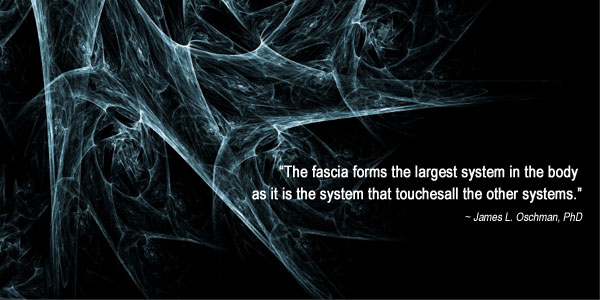Do you ever have a hard time figuring out the source of your pain? Like you know your knee feels stiff and achy but you can’t really tell if the pain is coming from your knee or your thigh? Or maybe it’s your foot because when you step on it just right the pain gets worse?
This could be because of myofascial trigger points or myofascial pain syndrome. Understanding what myofascial pain is and the source of your pain is a powerful step to start the healing process and to living a pain free life.
What Is Myofascial Pain?

Myofascial pain is a chronic condition characterized by localized pain and inflammation in the body’s soft connective tissue, particularly the muscles and fascia in the body. It occurs when sensitive trigger points, or “knots,” form in the fascia, causing referred pain, stiffness, and discomfort in other parts of the body. These knots happen in the muscle fibers, or connective tissues for several reasons; from repetitive movements, muscle strain, physical trauma from injury or surgery, or even over/underuse of the muscles. When these trigger points and pain become chronic it can turn in to myofascial pain syndrome.
Myofascial pain syndrome is not just a physical issue either; because your emotions are directly connected to your body. It is the body’s physical expression from emotional stressors like; accumulated stress, poor posture, repetitive strain, or muscle trauma. Addressing chronic myofascial pain holistically through practices like yoga, myofascial release, and mindful movement can help alleviate pain. This is because they target both the physical and emotional sources of tension.
There is also self myofascial release that you can do by focusing on body awareness and gentle self-care. Taking care of your fascia and addressing myofascial pain syndrome properly will lead you to improved overall well-being.
How common is myofascial pain syndrome?

Myofascial pain syndrome (MPS) is relatively common. So common in fact, that it is estimated that 85% of people will be affected by it at some point in their life. It is particularly prevalent among individuals with chronic pain conditions. Studies have shown that MPS is a significant contributor to musculoskeletal pain, especially in people with conditions like fibromyalgia and tension headaches.
You might be at higher risk for myofascial pain syndrome if you are prone to excessive stress and anxiety. Or if your muscles are under repetitive stress or injured. In this modern world of constant information and digital devices it seems a logical step to say most of us are at risk for developing myofascial pain at some point. This is unfortunate because myofascial pain can significantly impact your quality of life.
Remember, only a doctor can diagnose myofascial pain syndrome, so if you believe you are suffering from myofascial pain check in with your physician for a physical examination.
Types Of Myofascial Trigger Points

Myofascial trigger points, which are sensitive spots in the muscle or fascia, are categorized based on their activity and location. Here are the most common types of trigger points:
Active Trigger Point
Active trigger points are hyperirritable points in the muscles that cause pain at rest and can produce referred pain in predictable patterns. They are often responsible for chronic pain conditions.
The main identifying factors of an active trigger point are:
- Spontaneous pain when the muscle is moved
- Twitch response – putting pressure on the trigger point may cause twitching in the muscle or skin surrounding it.
- Jump response – meaning you might wince in pain if the area is touched
- Tenderness – the area of the trigger point may be tender to touch
Latent Trigger Point
A latent trigger point is a more dormant type of trigger point. Latent trigger points don’t often cause pain until they are pressed or activated by movement or stress, but they do have the potential to become active trigger points if they are under continuous stress.
Some characteristics of latent trigger points include:
- Pain when compressed – meaning the area is not painful unless pressed upon or activated
- Restricted movement
- Cause muscle weakness – this could cause delayed muscle reaction and muscle fatigue
Primary Trigger Point
A primary trigger point will develop as a direct result of muscle overload or injury, often becoming the main source of pain. These types of trigger points only occur in the muscle affected by the trauma or strain.
Secondary Trigger Point
Secondary trigger points arise in response to a primary trigger point, usually in compensatory muscles. This secondary trigger point is due to compensation or overuse in response to a muscle affected by a primary trigger point.
For example, let’s say you had a muscle spasm in your left leg. Due to the deep pain you started to place majority of your weight on your right leg. The overuse of the right leg and inability to relax muscles because of the excess load leads to localized pain and trigger points in the right leg.
Satellite Trigger Point
A satellite trigger point is a trigger point that occurs in the referred muscle tissue in response to a primary trigger point. Unlike a secondary trigger point that occurs in the opposing muscle that works to support the primary affected muscle, these trigger points occur in the muscles surrounding the primary active trigger point.
For example, if you have primary active trigger points causing shoulder pain you may start to notice you start to have pain worse in your neck. This neck pain is due to the satellite trigger point that may have resulted from bracing patterns surrounding the shoulder pain.
The different types of trigger points have been well-documented in recent years. Studies like those published in the Journal of Pain Research, highlight their role in chronic pain and musculoskeletal disorders.
Something science used to widely ignore, fascia, is finally being given the attention it deserves, leading to answers for people’s chronic pain disorders 👏👏.
Myofascial Pain Symptoms
There has been a lot of research on the various symptoms of myofascial pain syndrome. This chronic myofascial pain often affects the muscle fibers that primarily surround the affected or injured fascia.
The most common symptoms include:
- Localized Muscle Pain: Persistent pain in a specific area of the body, often associated with trigger points.
- Referred Muscle Pain: Muscle pain that radiates from the trigger point to other areas, following predictable patterns.
- Muscle Stiffness: Restricted movement and a sensation of tightness in the affected muscles.
- Tender Knots: Palpable, tender spots or taut bands in the muscles, often painful when pressed.
- Fatigue: Chronic pain can lead to sleep disturbances and overall fatigue. Leaving a feeling of heaviness in the muscles and can even lead to mood disorders.
While much of the research focuses on the physical effects of myofascial pain syndrome there are mental/emotional effects as well. Chronic pain can cause emotional distress and impact your mental well-being. And, unfortunately, emotional distress can worsen chronic pain.
It can be a vicious cycle which is why it is so important to address your pain with your doctor or a licensed professional. There are ways to heal, and a professional can help you root out the source of your myofascial pain so that you can begin to heal.
Myofascial Pain Causes

Myofascial pain can be triggered by numerous factors that then lead to the development of trigger points and muscle tension.
The most common risk factors for myofascial pain syndrome include:
- Muscle Overuse: Repetitive motions or sustained postures can strain muscles, leading to the formation of trigger points.
- Muscle Injury: Acute injuries, such as strains or sprains, can cause localized muscle damage and subsequent myofascial pain.
- Poor Posture: Prolonged poor posture places undue stress on certain muscles, contributing to tension and trigger point development.
- Stress/ anxiety: Chronic psychological stress can lead to muscle tightening and tension, increasing the likelihood of myofascial pain.
- Lack of Activity: Sedentary lifestyles can weaken muscles and increase the risk of developing trigger points.
Another reason this happens is because your fascia is fluid. This brilliant connective tissue moves in response to how you are moving your body in space. So, if you are overusing your muscles, the fascia is going to build up and thicken in those areas to support them. Or if you consistently tilt your head down your fascia is going to move in excess in the back of the neck in order to support the weight of your head and prevent you from falling forward.
Do you see how this leads to the build up of knots or tension? The good news is that there are ways to relieve and counteract myofascial pain syndrome.
Common Myofascial Pain Syndrome Treatments

Myofascial pain treatments work to alleviate pain, release trigger points, and restore muscle function. This can be done in different ways depending on your unique needs.
The most common myofascial release techniques are:
Physical Therapy
Working with a licensed physical therapist can be very beneficial with treating myofascial pain symptoms. A therapist will do a physical exam and use techniques like stretching, strengthening exercises, and manual therapy. This will help them not only identify the location of a myofascial trigger point, but also to help you relieve pain, muscle tension, and improve mobility.
Yes, some of these methods you can do at home, but only a licensed therapist can also use tools like a TENS unit or ultrasound machine(using sound waves) to help break up trigger points and increase blood flow to the affected area.
Myofascial Release Therapy
This involves applying sustained pressure to the fascia to release tightness and reduce pain. This can be done with the hands or various myofascial release tools. You can do this with a physical therapist or even a massage therapist. There are also plenty of myofascial release therapy techniques you can do yourself at home.
My fascial fitness training plan in the Uplifted membership is a great way to learn these techniques.
Trigger Point Injections
This would need to be done by a doctor specifically. It involves injecting anesthetic, corticosteroids, or botulinum toxin (botox) directly into trigger points to alleviate pain and improve mobility. These injections are often spaced out months apart but that can vary based on the person.
Dry Needling
Dry needling is a process performed by a physician that uses thin needles inserted into trigger points to release muscle tension and improve blood flow. The idea is that it triggers a local twitch response in the muscle fiber, causing it to contract in a way that will release the trigger point and then relax the muscles.
Medications
When pain starts to affect your everyday life it might be a good idea to consult with your doctor about medication. Nonsteroidal anti-inflammatory drugs (NSAIDs), like ibuprofen or Aleve, and muscle relaxants can help reduce pain and inflammation caused by myofascial trigger points. You may also find that using medicated creams like icy/hot, or an essential oil blend depending on your preference, for pain relief can help.
There are many treatments for myofascial pain syndrome. So it’s important to communicate with your primary care provider to determine what the best course of care is for you.
How Yoga Can Help Relieve Myofascial Pain
Yoga offers a powerful, holistic approach to managing chronic pain and relieving myofascial pain syndromes. By combining mindful movement, deep stretching, and breathwork. Unlike some treatments that focus solely on physical symptoms, yoga addresses the mind-body connection, helping to release tension and improve overall well-being.
Specific yoga poses like Pigeon Pose or Child’s Pose target distinct muscle groups where myofascial pain often manifests. By gently stretching the fascia, they encourage it to soften and release built-up tension. When you add in deep breathing (aka breathwork/pranayama) you not only increase oxygen flow to these tight areas but you enhance relaxation. This allows the muscles and fascia to release more effectively.
Yoga can also prevent the recurrence of myofascial pain. Regular practice improves posture, increases flexibility, reduces stress, and hydrates the fascia—all key factors in preventing the formation of painful trigger points. Plus, the mindful approach to movement that yoga encourages, helps you tune into your body’s needs and avoid habits that contribute to muscle tension.
You can incorporate myofascial release techniques into your yoga classes as well. Add in some self-massage or use your tools, like massage balls or foam rollers, in certain poses. You’ll find classes like this in my Uplifted membership.
Closing Thoughts
Whether you’ve suffered a muscle injury or are dealing with undiagnosed widespread pain, you don’t have to live your life in pain. You can heal from myofascial pain syndrome and prevent it from returning. If you’re ready to start your journey to pain-free living; explore my curated Myofascial Release Yoga Series or try the Uplifted Yoga Membership, where you’ll find classes that guide you through each pose with intention, helping you achieve lasting relief from myofascial pain.
Next Steps
- If you’re interested in practical kriya yoga as a way to improve your daily life and relationships, check out my Yoga for Self Mastery course.
- Order my Yoga Life book for a practical guide to creating balance in your life through yoga.
- Check out my YouTube channel and find some yoga classes that you can try out for yourself!
Experience 3 Training Videos from Inside My 200-Hour Online YTT

YOU MIGHT ALSO LIKE
- 7 Top Somatic Yoga Books to Regulate Your Nervous System
- 5 Best Somatic Yoga Apps for Nervous System Regulation
- Top Somatic Coaching Programs And How To Choose One
- Somatic Yoga Workshop Ideas for Teachers
- Somatic Yoga for Cortisol Detox: A Gentle Path to Stress Relief and Nervous System Healing
- Gentle Somatic Yoga: Heal Chronic Pain, Release Trauma, and Reclaim Your Bod
- Somatic Meditation: A Body-Based Approach to Healing Stress, Anxiety, and Trauma
- Advanced Pelvic Floor Breathing: A Somatic Approach to Healing
- Somatic Yoga For Yoga Teachers: Everything You Need to Know in 10 Steps
- How Somatic Shaking Can Release Tension and Reset Your Nervous System
- Discover Somatic Pilates: Enhance Your Body Awareness and Flexibility
- Kundalini for Feminine Energy: Ignite Your Creative Power and Passion
- 6 Effective Somatic Yoga for Neck and Shoulders
- How to Teach Somatic Yoga: A Practical Guide for Instructors
- The Best Somatic Exercises for Grief: Find Healing Through Movement













